XRF test results for a Cuisinart 3 quart stainless steel saucepan (model # 7193 -20)
 Introduction:
Introduction:
Tamara Rubin is a Federal award winning independent advocate for consumer goods safety and childhood Lead poisoning prevention. She is also a mother of Lead-poisoned children. She began testing consumer goods for toxicants in 2009, and was the parent-advocate responsible for finding Lead in the popular fidget spinner toys in 2017. She uses XRF testing (a scientific method used by the Consumer Product Safety Commission) to test consumer goods for metallic toxicants (including Lead, Cadmium, Mercury and Arsenic). To read more about the testing methodology employed for the test results reported on this blog, please click this link.
XRF Test Results For The Pan Pictured
Reading #1.) Handle of Pan
60-second reading
- Lead (Pb): non-detect
- Cadmium (Cd): non-detect
- Mercury (Hg): non-detect
- Bromine (Br): 21 +/- 5 ppm
- Chromium (Cr): 144,600 +/- 400 ppm
- Vanadium (V): 1,011 +/- 87 ppm
- Manganese (Mn): 81,300 +/- 500 ppm
- Iron (Fe): 747,900 +/- 600 ppm
- Nickel (Ni): 12,300 +/- 200 ppm
- Copper (Cu): 12,700 +/- 200 ppm
- Tin (Sn): 31 +/- 9 ppm
- Barium (Ba): 55 +/- 35 ppm
Reading #2.) Inside rivets of pan
60-second reading
- Lead (Pb): non-detect
- Cadmium (Cd): non-detect
- Mercury (Hg): non-detect
- Bromine (Br): 14 +/- 5 ppm
- Chromium (Cr): 153,400 +/- 500 ppm
- Vanadium (V): 1,245 +/- 116 ppm
- Manganese (Mn): 73,500 +/- 500 ppm
- Iron (Fe): 713,300 +/- 800 ppm
- Nickel (Ni): 42,200 +/- 400 ppm
- Copper (Cu): 14,500 +/- 200 ppm
- Titanium (Ti): 432 +/- 140 ppm
- Molybdenum (Mo): 547 +/- 40 ppm
- Tin (Sn): 250 +/- 15 ppm
- Barium (Ba): 494 +/- 47 ppm
Reading #3.) Outside rivets of pan
90-second reading
- Lead (Pb): non-detect
- Cadmium (Cd): non-detect
- Mercury (Hg): 19 +/- 4 ppm*
- Bromine (Br): non-detect
- Chromium (Cr): 277 +/- 90 ppm
- Vanadium (V): 613 +/- 194 ppm
- Manganese (Mn): 176 +/- 54 ppm
- Iron (Fe): 1,522 +/- 48 ppm
- Nickel (Ni): 132 +/- 20 ppm
- Zinc (Zn): 66 +/- 5 ppm
- Barium (Ba): 22 +/- 9 ppm
- Platinum (Pt): 272 +/- 13 ppm
- Balance: Aluminum
*This level of a toxicant being present is common in the exterior part of the rivets for any pan with this type of construction & is also typical for other components of cast Aluminum cookware. Cast Aluminum is often contaminated with trace Lead, Arsenic or Mercury (in this case at levels not considered by any regulatory standard to be concerning.) I will post a link here to more examples of cast aluminum items shortly.
Reading #4.) Center of bottom – food surface of pan
60-second reading
- Lead (Pb): non-detect
- Cadmium (Cd): non-detect
- Mercury (Hg): non-detect
- Bromine (Br): 19 +/- 5 ppm
- Chromium (Cr): 155,200 +/- 500 ppm
- Vanadium (V): 1,316 +/- 107 ppm
- Manganese (Mn): 97,200 +/- 600 ppm
- Iron (Fe): 717,000 +/- 800 ppm
- Nickel (Ni): 13,000 +/- 200 ppm [This is a low amount of Nickel for the food surface of a pan.]
- Copper (Cu): 15,900 +/- 200 ppm
- Zinc (Zn): 39 +/- 26 ppm
- Barium (Ba): 84 +/- 40 ppm
Reading #5.) Bottom of pan (heat surface)
60-second reading
- Lead (Pb): non-detect
- Cadmium (Cd): non-detect
- Mercury (Hg): non-detect
- Bromine (Br): 13 +/- 5 ppm
- Chromium (Cr): 134,700 +/- 400 ppm
- Vanadium (V): 1,179 +/- 104 ppm
- Manganese (Mn): 102,100 +/- 600 ppm
- Iron (Fe): 739,100 +/- 700 ppm
- Nickel (Ni): 13,700 +/- 300 ppm
- Copper (Cu): 8,622 +/- 186 ppm
- Zinc (Zn): 61 +/- 25 ppm
- Titanium (Ti): 217 +/- 118 ppm
- Barium (Ba): 166 +/- 41 ppm
Reading #6.) Inside wall of pan (food surface)
60-second reading
- Lead (Pb): non-detect
- Cadmium (Cd): non-detect
- Mercury (Hg): non-detect
- Bromine (Br): 10 +/- 5 ppm
- Chromium (Cr): 154,000 +/- 500 ppm
- Vanadium (V): 1,266 +/- 120 ppm
- Manganese (Mn): 96,900 +/- 600 ppm
- Iron (Fe): 718,700 +/- 900 ppm
- Nickel (Ni): 12,700 +/- 300 ppm [This is a low amount of Nickel for the food surface of a pan.]
- Copper (Cu): 16,200 +/- 300 ppm
All readings were repeated multiple times (on each component) to confirm the results. Testing was done using a freshly calibrated XRF instrument testing in “Consumer Goods”/ “Test All” mode.
Some additional reading that might be of interest:
- The post discussing the testing methodology used on this website
- Post discussing how to send in an item for testing
- Things that you can test at home.
- Things that might be better tested with an XRF instrument.
Thanks for reading. Thank you for sharing my posts. As always, please let me know if you have any questions and I will do my best to answer them personally as soon as I have a moment (which may not be right away – but I will try!)
Tamara Rubin
#LeadSafeMama
Amazon links are affiliate links. If you purchase something after clicking on one of my links I may receive a percentage of what you spend – at no extra cost to you.
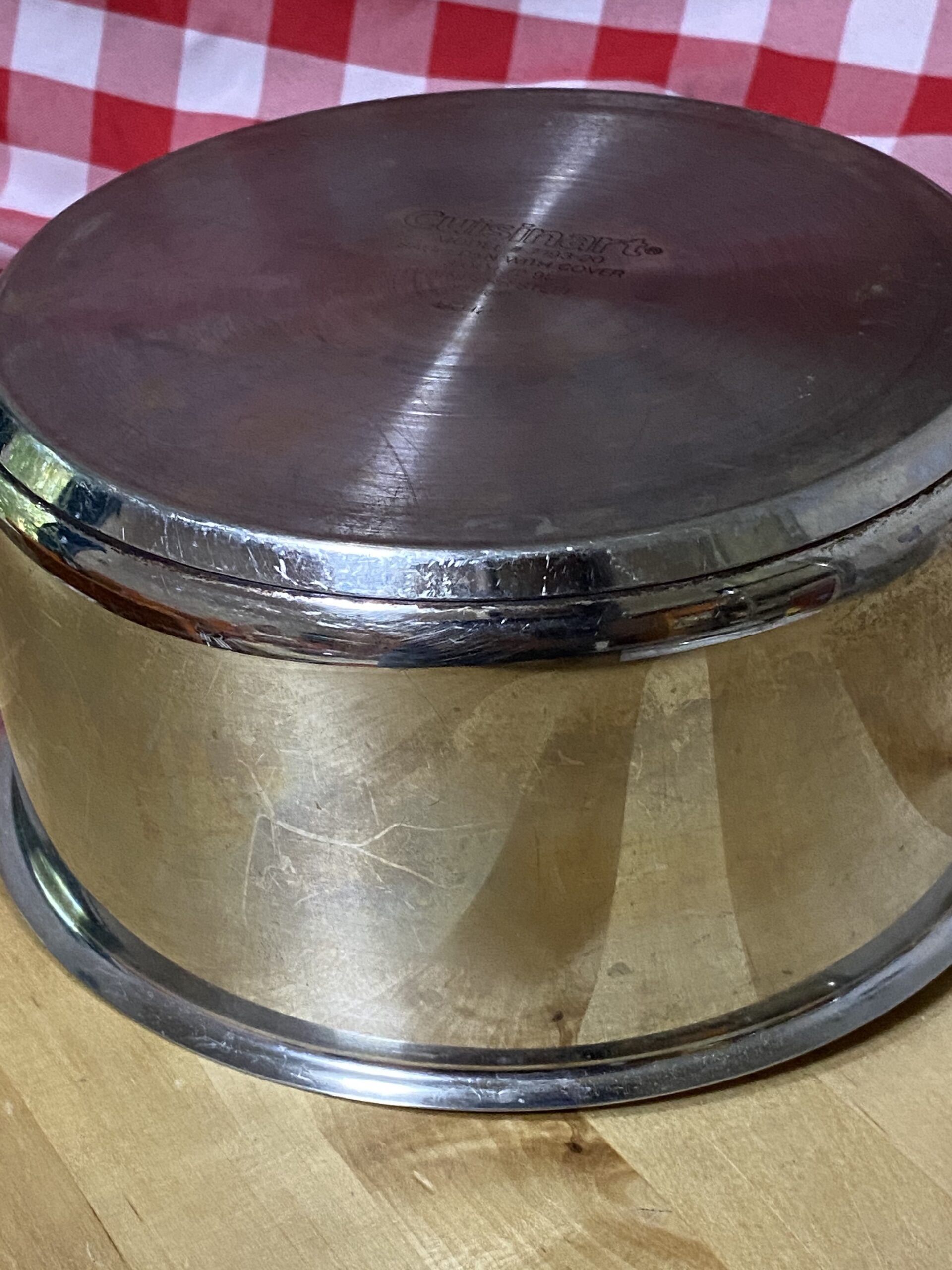
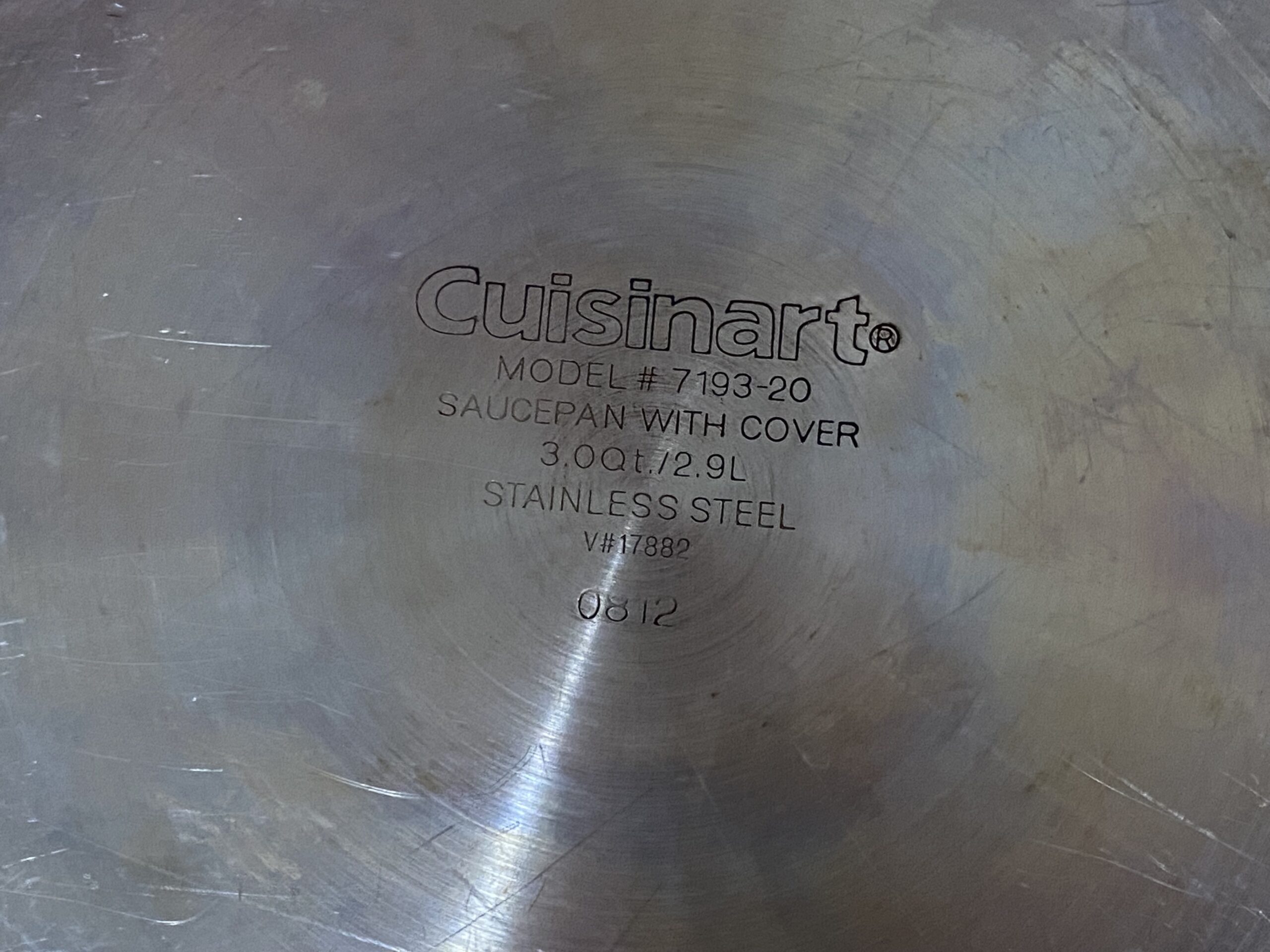
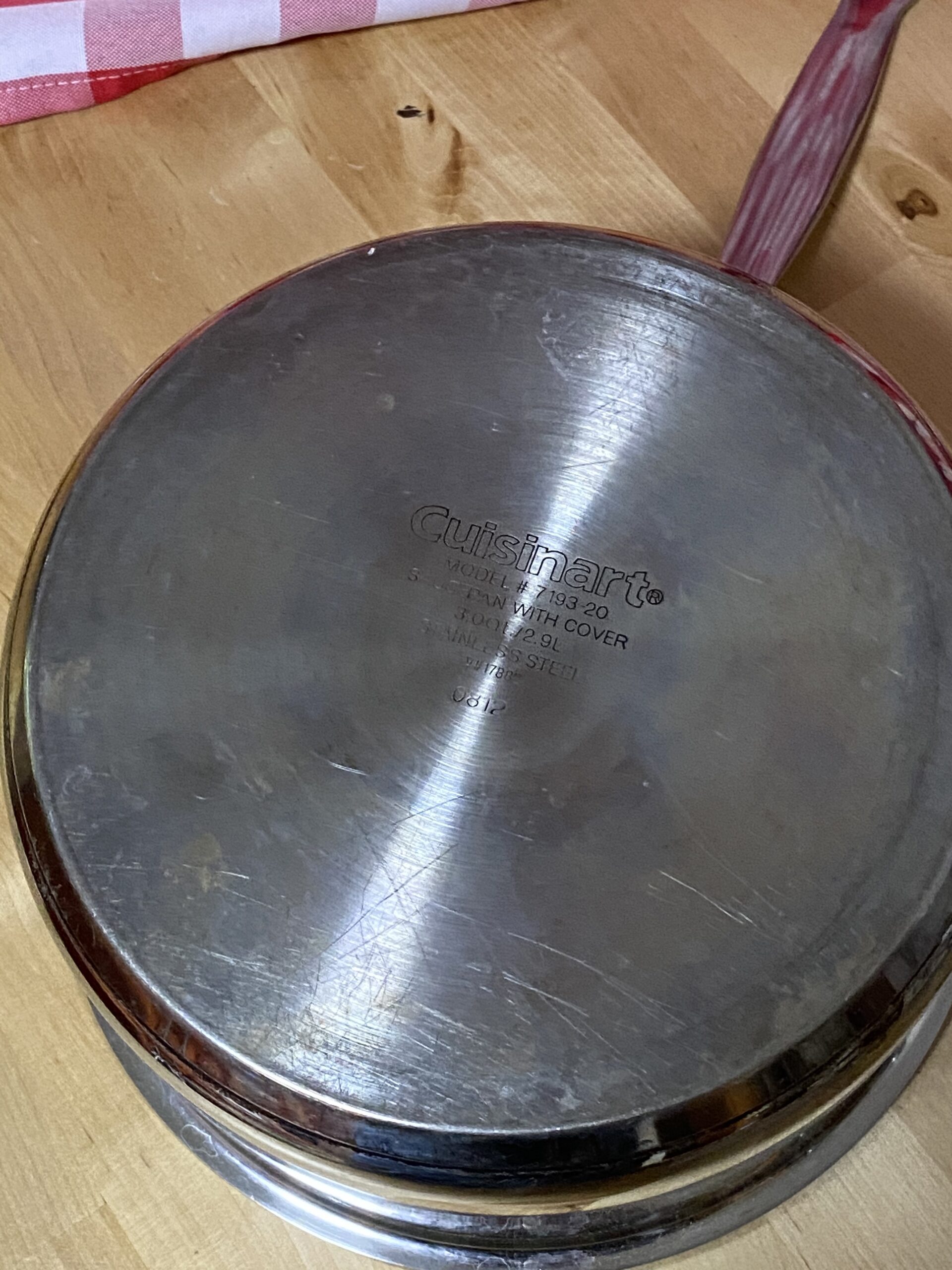
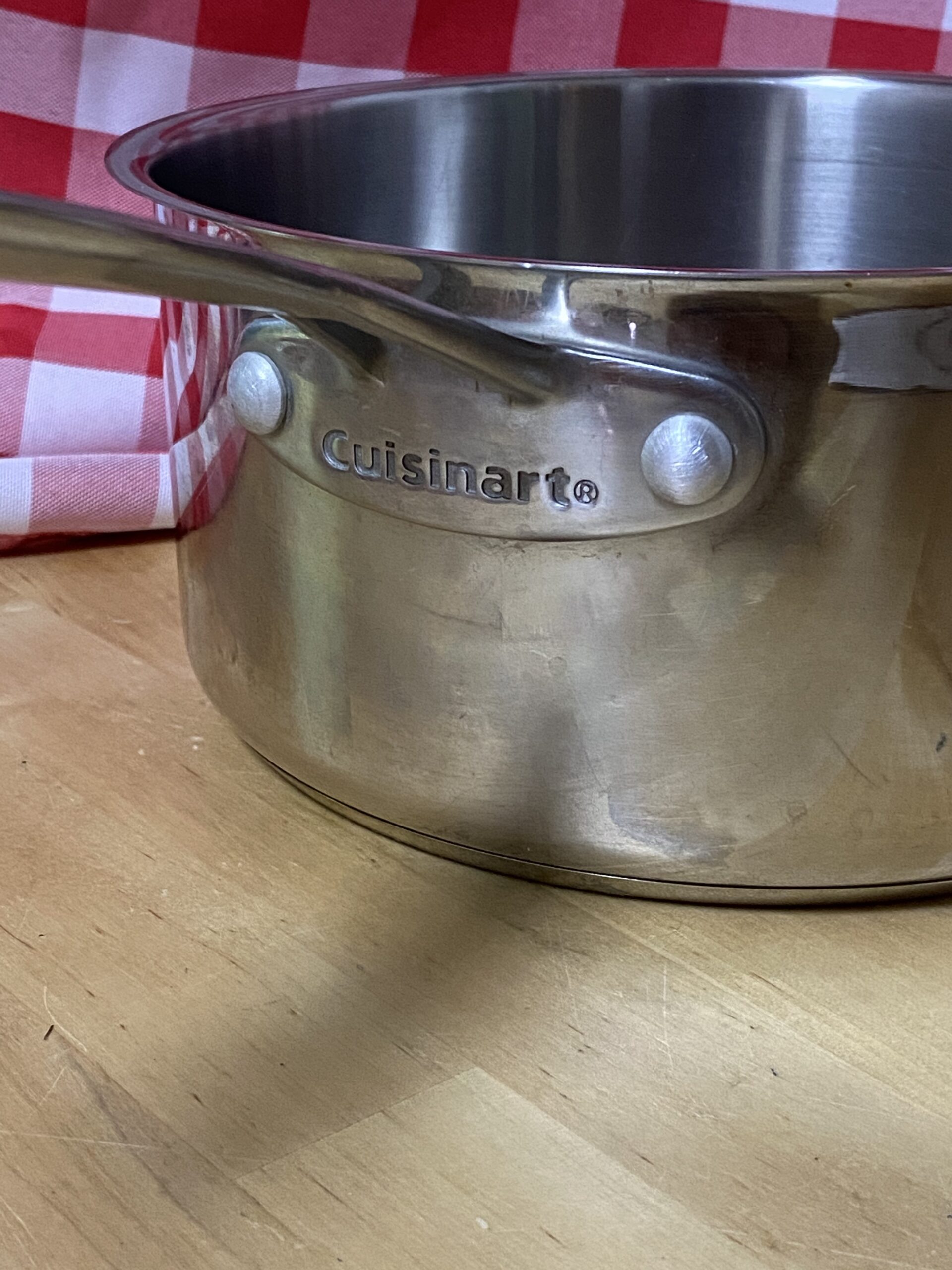
Never Miss an Important Article Again!
Join our Email List


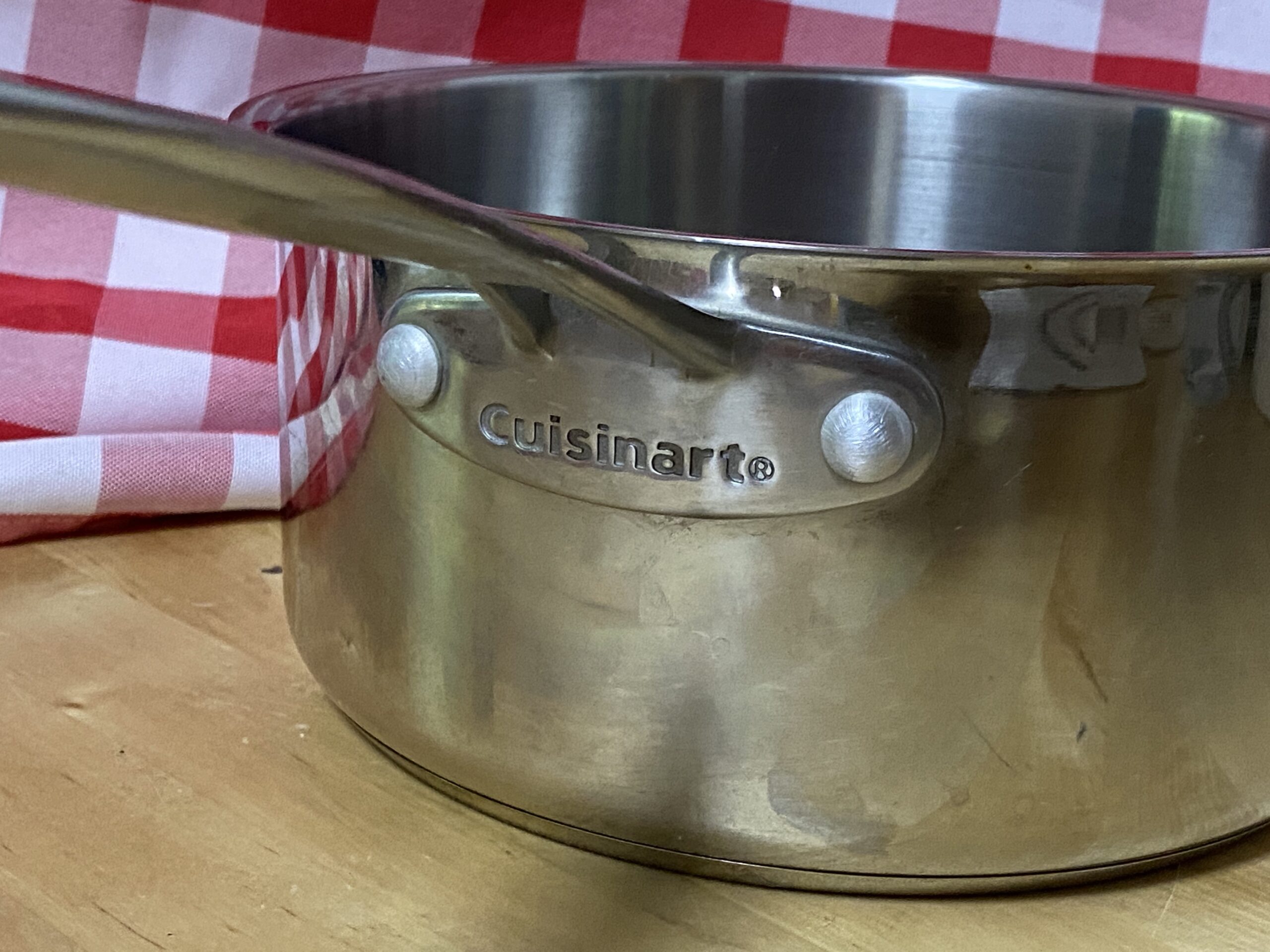 Introduction:
Introduction: 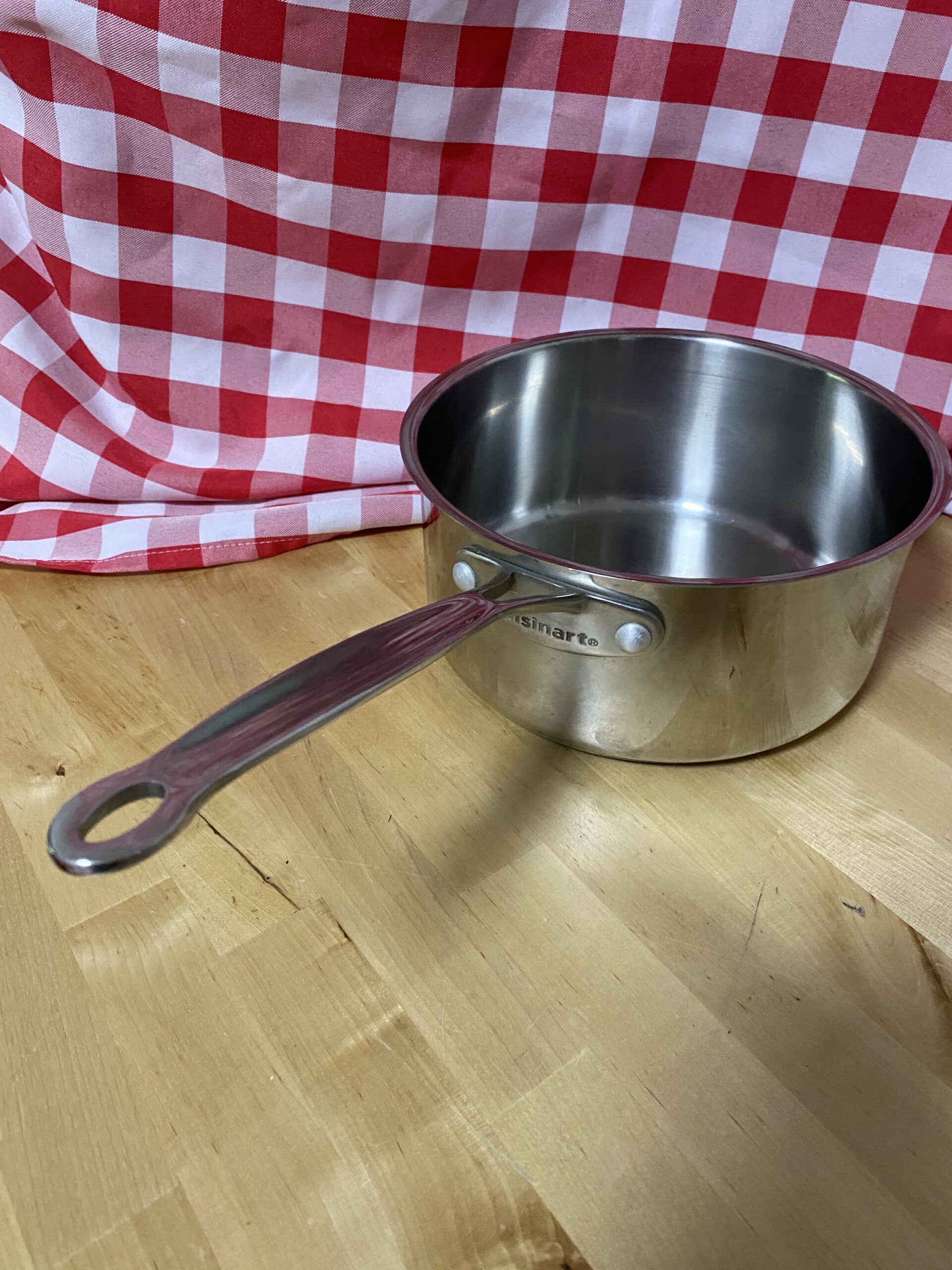

Hi Tamara! Wow I am appalled. I have been using this for years and I’ve been on the fence about upgrading so thank you for this post! Have you heard of a newer brand called Hestan Nanobond? I am currently looking at this vs. All-Clad. I know all-clad is one of the better stainless steel on the market but Hestan talks a big game! Let me know what you think! and thank you again!!
Sorry I’m still learning, so this is safe to use?
Hi Marianna – yes. It is safe to use. With trace toxicants at this level though we need to use this as an opportunity to demand more of manufacturers Even though I have been talking about this for a decade (contaminated cast aluminum “rivets” [for lack of a better word] in stainless pans made with this sort of construction) most companies have made no change. This is why I like this pan (made of a single sheet construction – no rivets, so no possibility of the presence of contaminated aluminum) overall a high quality low-nickel stainless pan: https://tamararubin.com/2018/12/this-is-my-new-favorite-pan-and-thats-before-i-have-even-used-it-yet-lol/
Here’s my general guide to cookware: https://tamararubin.com/2021/01/i-want-to-buy-some-nontoxic-cookware-which-pots-pans-are-the-safest-for-cooking-which-pots-pans-are-the-least-toxic/
Tamara
Thank you for this! I have found this brand at my local Marshall’s with measuring lines on the INSIDE of each pot. Have you tested that model?
Hi Tamara. Thank you for all of the work that you do! Are you able to advise how much of an issue rivets which are aluminum are? By way of background, last year I purchased a brand new set of pots and pans which were advertised as being made of stainless steel and tempered glass (in the lids). They were also advertised as dishwasher safe. Over time, however (and probably accelerated by washing in the dishwasher), the rivets on the exterior surfaces of the pots/pans/lids have developed a dull, tarnished, and sometimes slightly corroded appearance (those on the outside of the frying pan are even starting to look a charcoal colour!!!). This leads me to assume that these external components are aluminum not stainless steel (VERY annoying as this was not disclosed anywhere). I have two young children (2 and 8) and use the pots to cook rice/pasta for them, but I do always wash the interiors of the pots with water and a small amount of dish soap immediately before cooking in them (note that the frying pan is only ever used for food for my husband and I). Thanks in advance for any advice you may have.
I’m confused, are you saying these levels are high and we shouldn’t use cuisinart? Because I saw in your amazon store that you recommend buying them .
Hi Autumn, if you look above in the comments (the third comment from the top), Tamara has already answered a variation of this question (ie. is this safe to use). 🙂
The one I got have food measurement paint inside the sauce pan. Does you have the same thing?
The recent measurements have tested Lead-free.
T
Is it fine to have measurement markings in the saucepan? I recently found the same model but I found there is measurement markings inside.